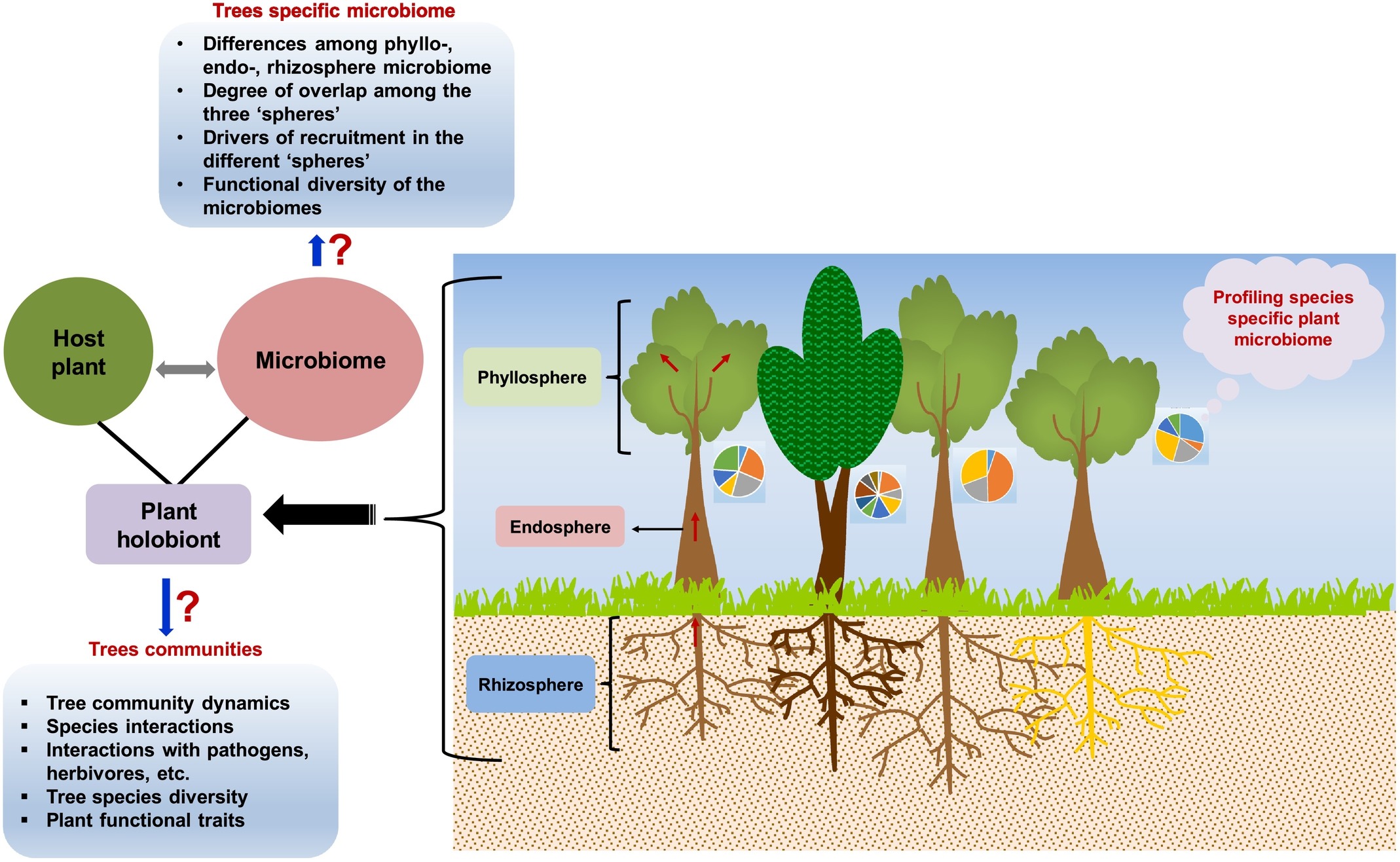Forests have a key role in the global fluxes of energy and matter. It has long been known that forest trees are closely associated with microorganisms, but a comprehensive description of the tree associated microbiome (hereafter referred to as plant microbiome) extending beyond the relatively well-studied root mutualists, and the understanding of its functional role is largely missing.
In a recent study published in Applied Soil Ecology, researchers from Xishuangbanna Tropical Botanical Garden (XTBG) argue that there is a strong link between the plant microbiome and key ecological processes (i.e. primary production, decomposition, nutrient cycling, etc.) in the forest ecosystem.
The researchers identified two major gaps of knowledge calling for more studies that describe tree microbiomes comprehensively for a variety of forest ecosystems. First, a more general appreciation of the microbiome across multiple tree species with an explicit community approach is critically missing. A second major gap is the lack of comprehensive studies at the whole plant level extending on the current focus on root-associated microorganisms of the belowground part of plants.
The researchers proposed that future studies should extend on simply describing the microbial communities by exploring how they interact across different plant compartments (phyllosphere, rhizosphere, and endosphere) and what kind of functions they have.
“A novel focus on the functional diversity of the plant microbiome is needed. This could include the identification of specific functional genes known for their ecological relevance and allowing a connection to some key ecosystem functions, for example, related to nutrient cycling,” said Prof. YANG Xiaodong, principal investigator of the study.
Contact
YANG Xiaodong Principal Investigator
Key Laboratory of Tropical Forest Ecology, Xishuangbanna Tropical Botanical Garden, Chinese Academy of Sciences, Mengla, Yunnan 666303, China
E-mail: yangxd@xtbg.ac.cn
A graphical overview of key elements in tree microbiome research. (Image by Sandhya Mishra)

